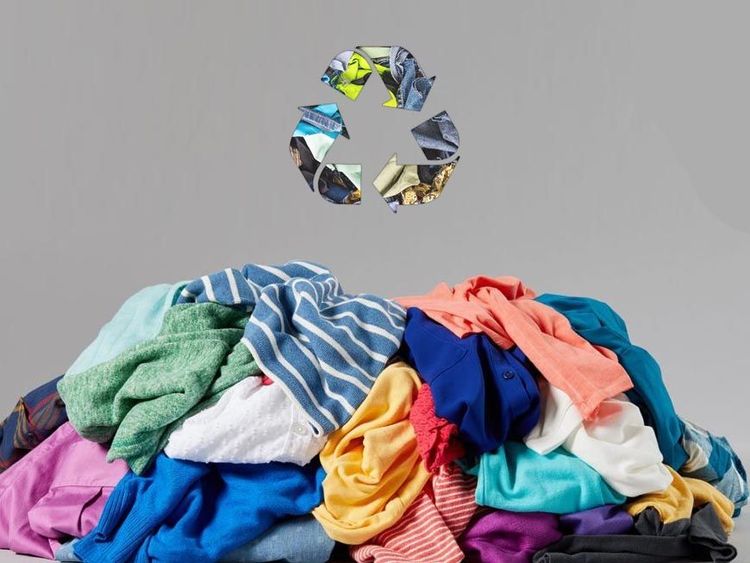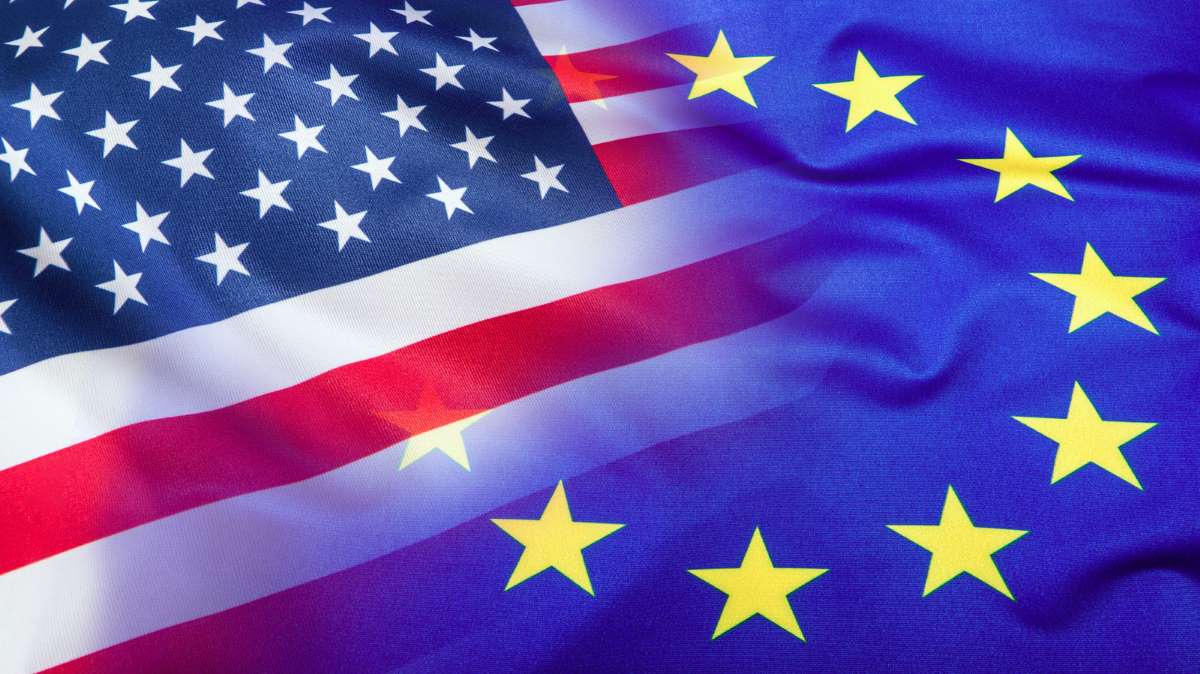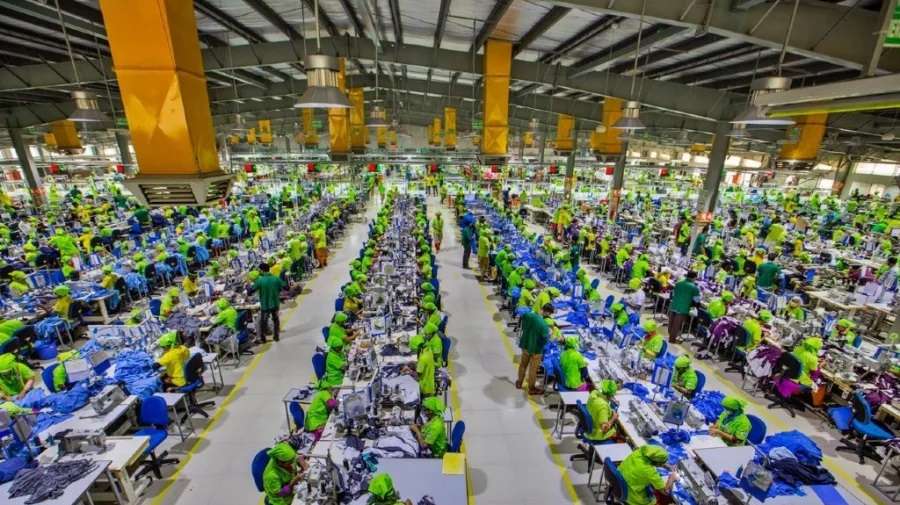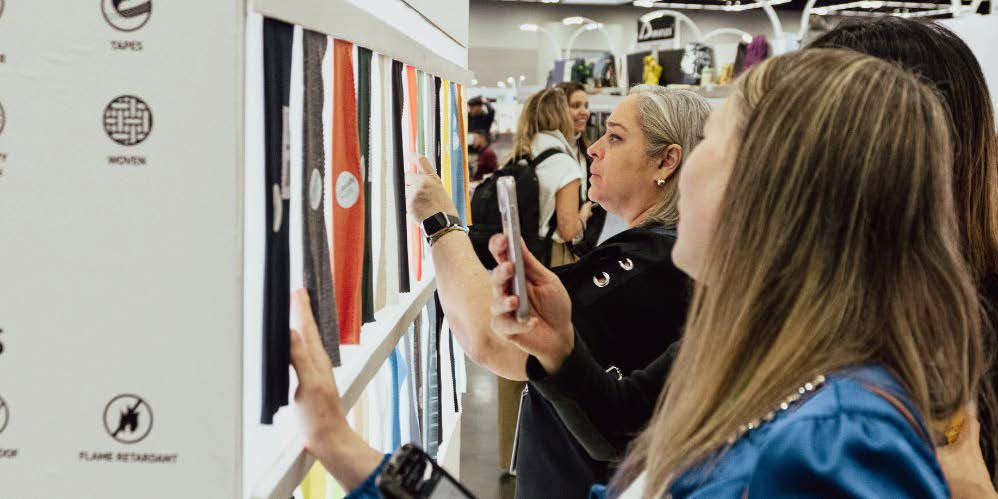FW
Opening on April 9, 2025 at the Ho Chi Minh City, the 2025 Vietnam Saigon Textile & Garment Industry – Fabric & Garment Accessories Expo (SaigonTex - SaigonFabric 2025) registered a 6 per cent increase in participants, hosting over 1,100 exhibitors from 25 countries and territories, including key players like Bangladesh, China, Japan, Korea, the US, and Vietnam, highlighting the expo's global significance.
A key attraction is the second Product Presentation Program (PPP), featuring eight themed displays with static exhibits, live technology demonstrations, and a dynamic fashion show presenting garments made from exhibitors' materials, modeled by professional dancers.
VITAS organized a bespoke business matching program, facilitating connections between exhibitors and potential buyers. Attendees can also engage with leading global brands and explore the latest advancements in textile and garment manufacturing technologies.
At the opening ceremony, Tran Ngoc Liem, General Director, VCCI-Ho Chi Minh City branch underscored the textile and garment sector's pivotal role in Vietnam's economy, noting its significant contributions to domestic and international trade and its consistent attraction of foreign investment.
In 2024, Vietnam's textile and garment exports grew by 11.26 per cent Y-o-Y to $44 billion in 2024, propelling it past Bangladesh to become the world's second-largest exporter, after China.
Despite this success, Liêm acknowledged challenges like labor shortages, order volatility, FTA origin rule complexities, and increasing trade barriers. He stressed the need for companies to strengthen supply chains, invest in technology and automation, and adopt sustainable practices.
Liêm outlined a strategic roadmap for the industry, projecting a gradual shift towards sustainable development by 2030, followed by deeper global integration and a circular economy focus by 2035, alongside domestic value chain completion.
Echoing this, Cao Hữu Hiếu, General Director, Vinatex emphasized the growing importance of green and digital transformations, urging Vietnamese enterprises to focus on high value-added production, adopt modern technologies for resource efficiency, invest in advanced equipment, and pursue dual transformation strategies.
Hiếu affirmed the expo as a prime platform for accessing cutting-edge technologies and fostering greater trade collaboration.
Co-organized by prominent industry bodies, SaigonTex - SaigonFabric 2025 is being held at the Saigon Exhibition and Convention Center until April 12, 2025.
Monforts to showcase advanced technical textile coating solutions at Techtextil North America in USA
German textile machinery specialist Monforts will spotlight its cutting-edge coating and finishing technologies for technical textiles at Techtextil North America, held in Atlanta, Georgia, from May 6-8. Represented by PSP Marketing of Charlotte, North Carolina, Monforts will exhibit at stand 3231 within the VDMA German Pavilion at the Georgia World Congress Center.
The company’s versatile MontexCoat system, combined with Montex stenters, enables the production of a wide range of technical fabrics, including tents, awnings, blackout blinds, sail cloth, automotive interiors, and medical disposables. The system supports diverse techniques such as full PVC coating, pigment dyeing, low-penetration treatments, knife and roller coating, screen printing, and solvent coatings in explosion-proof environments. Rapid fabric changeovers ensure material and energy efficiency.
Achim Gesser, Monforts Area Sales Manager, noted the strong market response to the MontexCoat’s flexibility. For customers with simpler needs, the economical coaTTex unit offers air knife and knife-over-roller coating.
At its Advanced Technology Center (ATC) in Monchengladbach, Germany, Monforts has integrated a MontexCoat unit into a full pilot line for industrial-scale fabric testing. This line can process materials at up to 320°C, even applying different coatings on each fabric side in a single pass using TwinTherm burners. It also includes a powerful stretching unit capable of ten-ton tensioning in both length and width.
Additional innovations include the T-max grease-free stenter chain for high-speed, high-temperature applications. With customers spanning home textiles to automotive and flame-retardant fabrics, Monforts is set to reaffirm its commitment to North America’s growing technical textiles market at the upcoming Atlanta showcase.
Backed by the Government of Tamil Nadu, Confederation of the Indian Industry (CII) organized
buyer-seller meet with the Cambodian Ministry of Commerce (MoC) to address tariffs issues, foster better trade relations, and explore potential opportunities in the textile. The meet was attended by several representatives from the yarn and fabric sectors.
Ok Boung, Secretary of State, MoC, and Vanlalvawna Bawitlung,Indian Ambassador to Cambodia, presided over this CII-Government of Tamil Nadu Textile Buyer – Seller Meet & Product Showcase event in Phnom Penh.
During the event, Boung emphasized on the need for Cambodia to boost its competitiveness, integrate into regional and global supply chains, enter new markets, improve its competitiveness, increase production capacity, connect to global value chains, and attract investment to developing industries.
Known for its journey from fiber to fabric, Tamil Nadu is home to multiple textile clusters and is the country’s largest exporter of ready-made clothing, R Lalitha, IAS, Director of Textiles, Government of Tamil Nadu remarked.
The meeting was also attended by Nandha Gopal, Investment Facilitator Guidance, Tamil Nadu; Albert Tab, Executive Committee Member, TAFTAC; and Richhpal Singh, Counselor (Political & Commerce), Indian Embassy in Phnom Penh.
Aiming to improve international business ties and promote textile industry growth, Indian sellers actively sought buyers and partners for collaborative textile manufacturing partnerships between India and Cambodia in response to current global uncertainties and climate challenges.
The German city of Hanover is set to host ITMA 2027, the world’s largest textile and garment technology exhibition, from 16 to 22 September 2027. Returning to Germany for the first time in over three decades, ITMA will be held at the Messegelaende Hannover, occupying a massive 200,000 square metres across 13 exhibition halls.
Organised every four years since 1951, the last edition in Hanover took place in 1991. The successful bid for ITMA 2027 was jointly submitted by Deutsche Messe, the City of Hanover, and the office of the Lord Mayor. Belit Onay, Mayor and CEO of Hanover, expressed his excitement, saying, “We are elated to have successfully bid for ITMA 2027. Hanover is an organised and green city that offers a relaxed yet efficient experience to visitors. We look forward to welcoming ITMA back after more than 30 years.”
Known for hosting large-scale trade shows, Hanover offers a diverse range of accommodation. The city has more than 18,000 hotel beds, with an additional 54,000 available in surrounding districts. Around 4,000 private apartments and guesthouses further expand the lodging capacity. Deutsche Messe chairman Jochen Koeckler said, “The majority of accommodation allows travel to the venue within 30 to 90 minutes. A campground across from the exhibition site will also be open for participants bringing motorhomes and caravans.”
To streamline lodging arrangements, ITMA Services has appointed bnetwork as its official accommodation provider. Having managed past ITMA editions in Barcelona, bnetwork will handle hotel and vacation rental bookings for the event. A dedicated booking website will go live soon, and early enquiries can be directed to This email address is being protected from spambots. You need JavaScript enabled to view it..
Despite not being a primary international gateway, Hanover offers strong connectivity within Europe and beyond. The city is serviced by a well-connected airport and direct high-speed trains. The exhibition centre itself is easily accessible, with two modern light rail stations, direct motorway links, and 39,000 parking spaces.
Alex Zucchi, president of CEMATEX, the exhibition owner, said, “We are excited to bring ITMA 2027 to Hanover. The city has the infrastructure and expertise to host a global gathering of this scale.”
More event details and the official ITMA 2027 website will launch in July, ahead of stand space applications opening in September. The previous ITMA, held in Milan in 2023, saw participation from 1,709 exhibitors and over 111,000 visitors from 143 countries.
In the current 2024-25 cotton season, up to March 31, 2025, the Government of India has successfully purchased 52.5 million quintals of seed cotton, equivalent to 10 million bales at Minimum Support Price (MSP). Executed through its primary agency, the Cotton Corporation of India (CCI) under the Ministry of Textiles, this procurement represents 38 per cent of the total cotton arrivals of 26.3 million bales and 34 per cent of the estimated total cotton production of 29.425 million bales in the country.
Among the states, Telangana has recorded the highest procurement at 4 million bales, followed by Maharashtra with 3 million bales and Gujarat with 1.4 million bales. Other states with significant procurement include Karnataka (500,000 bales), Madhya Pradesh (400,000 bales), Andhra Pradesh (400,000 bales), and Odisha (200,000 bales). Procurement in Haryana, Rajasthan, and Punjab totals 115,000 bales. In total, Rs 374.5 billion (approximately $4.5 billion USD) has been paid to roughly 2.1 million cotton farmers across all cotton-producing states.
The MSP system continues to provide profitable prices to cotton farmers, protecting them from forced sales when market prices drop below the MSP. To facilitate efficient procurement, CCI has established 508 procurement centers nationwide. Several digital initiatives have been implemented, including on-site Aadhaar (Indian identification number) authentication, SMS notifications for payments, and 100 per cent direct payments through the National Automated Clearing House (NACH).
Available in nine regional languages, the Cott-Ally mobile app allows farmers to access real-time information on MSP rates, procurement centers, and payment tracking. Furthermore, all cotton bales produced by CCI are traceable via QR codes using blockchain technology to ensure transparency and accountability.
The Government of India remains committed to safeguarding the interests of cotton farmers through a fair, transparent, and efficient procurement process.
Ironing and pressing machines will take centre stage at the Garment Tech Istanbul Exhibition 2025, drawing attention with their advanced features and cutting-edge designs. Set to run from June 25 to 28 at the Istanbul Expo Center (IFM), the event will bring together all major technologies used in garment and ready-to-wear production. From sewing and embroidery to packaging and finishing systems, the exhibition promises a comprehensive showcase.
Leading brands like Malkan Makina, Alba, Silter, and LGM Group will exhibit a wide array of equipment, including interlining bonding machines, transfer and stone printing machines, and modern ironing benches. Energy-saving ironing systems, high-pressure steam presses, touch-screen programmable units, and robotic automatic stations will be among the standout innovations on display.
Turkey, known for its strong textile and apparel industry, has emerged as a global hub for manufacturing industrial ironing and pressing systems. Local producers offer products ranging from dry cleaning machines and steam boilers to ironing boards and automatic presses, catering to sectors like hospitality, healthcare, and garment production. These machines are exported across Europe, the Middle East, North Africa, Central Asia, and Russia.
The exhibition is expected to attract global buyers and industry professionals, offering domestic producers a key platform to expand into new markets and form strategic partnerships. With a strong focus on R&D and innovation, exhibitors will unveil environmentally friendly, anti-limescale, and fabric-sensitive models that enhance efficiency and reduce energy consumption. Garment Tech Istanbul 2025 promises to be a vital hub for discovering next-generation technologies shaping the future of garment production.

The US textile recycling and resale industry is reeling from the steep tariffs imposed on imported textile scraps and used clothing, as per data compiled by Karishma Gupta, Founder & CEO of Eslando, a textile recycling feedstock marketplace. The tariffs, that is almost as high as 40 per cent on goods from exporters like India, China, Bangladesh, and Pakistan, threaten to disrupt the nation's robust circular textile economy and drive up consumer prices.
While the apparel sector has seen prominent stock market fluctuations, with giants like Nike, adidas, and Puma experiencing declines of approximately 15 per cent, the impact on the recycling sector is proving to be a critical concern.
US a key player in global textile recycling
The US holds an important position in the global textile recycling landscape, acting as the world's largest importer of used clothing and the second-largest importer of textile scraps. This reliance on international suppliers has historically allowed the US to maintain a cost-effective and efficient infrastructure for sorting, processing, and repurposing textile waste.
However, the newly implemented tariffs are poised to disrupt these established trade relationships, significantly increasing costs for domestic recyclers, sustainable manufacturers, and second-hand retailers.
Table: Textile scrap imports to the US (2023)
|
Exporting country |
Value of exports to US ($) |
|
Pakistan |
$23.8 million |
|
Honduras |
$15.9 million |
|
Canada |
$9.49 million |
|
Mexico |
$7.68 million |
|
India |
$6.55 million |
|
Bangladesh |
$6.27 million |
|
China |
$5.65 million |
|
Dominican Republic |
$4.08 million |
|
Source: Observatory of Economic Complexity (OEC) |
The data compiled by Gupta, sourced from the Observatory of Economic Complexity (OEC), the US imported substantial volumes of textile scraps and used clothing in 2023.
Table: Used clothing imports to the US (2023)
|
Exporting country |
Value of Exports to US ($) |
|
China |
$8.82 billion |
|
India |
$2.69 billion |
|
Pakistan |
$1.5 billion |
|
Mexico |
$1.27 billion |
|
Bangladesh |
$208 million |
|
Canada |
$136 million |
|
Dominican Republic |
$110 million |
|
Source: Observatory of Economic Complexity (OEC) |
The above data clearly illustrates the US’ dependence on imports,” says Gupta. “With nearly $17 billion worth of used clothing imported in 2023 alone, the impact of these tariffs will be felt across the entire supply chain.”
Table: Global import leaders (2023)
|
Country |
Textile scrap imports |
Used clothing imports |
|
India |
$229 million |
$624 million |
|
United States |
$86 million |
$16.9 billion |
|
Germany |
— |
$4.54 billion |
|
Japan |
$21.1 million |
$3.98 billion |
|
France |
— |
$3.21 billion |
|
United Kingdom |
— |
$2.71 billion |
|
Source: OEC |
Sustainability and affordability at risk
Analysts, including Gupta, warn the increased costs will likely lead to higher prices for recycled materials and second-hand clothing, impacting both manufacturers and consumers. This could undermine sustainability efforts and threaten the viability of small-scale recyclers and non-profit thrift organizations.
In an attempt to mitigate the impact of the tariffs, US importers are exploring alternative trade partnerships with nations such as Honduras, Mexico, the Dominican Republic, and the United Arab Emirates. However, concerns remain about the capacity of these countries to fully replace the supply from traditional partners.
Outlook a critical juncture
The future of the US textile recycling industry hangs in the balance. Without strategic interventions, the tariffs could lead to increased costs for recycled materials; higher consumer prices for second-hand clothing; threats to small-scale recyclers and non-profit thrift stores; setbacks in achieving US sustainability goals. “This is a complex issue with far-reaching implications,” Gupta explained. “We need to consider policy solutions that support domestic recycling, provide subsidies, and establish preferential trade agreements to alleviate the pressure on this vital industry.” The coming months will be crucial in determining whether the US textile recycling industry can adapt and thrive, or if it will face significant disruption.
The Trump administration’s announcement on April 2 of steep tariffs on US imports from garment-producing countries including Cambodia, Bangladesh, Sri Lanka, Indonesia, Lesotho, and Vietnam has sparked concerns about the potential impact on garment workers. The Clean Clothes Campaign (CCC) has urged US and global brands to absorb the financial burden themselves rather than shifting it onto the most vulnerable in the supply chain low-paid workers.
Many of these workers already survive on below-subsistence wages, with little to no savings. Any attempt to mitigate tariff costs by cutting wages, slashing product prices, increasing unpaid overtime, or relocating production could push workers deeper into debt and food insecurity.
The industry’s key players - Nike (2024 revenue $51.4 billion), Gap ($15.1 billion), PVH/Calvin Klein ($8.7 billion), Levi’s ($6.4 billion), and Victoria’s Secret ($6.2 billion) along with major manufacturers like Sri Lanka’s Mas Holdings (valued at $800 million), are well-positioned to absorb added costs. However, reports suggest that brands like Gap, Walmart, and Levi’s have already begun pressuring suppliers to shoulder the tariff impact, exacerbating the strain on workers.
The CCC warns against repeating the mistakes seen during the Covid-19 crisis, when brands cut costs at the expense of millions of workers. In countries like Sri Lanka, where committees have been formed to negotiate with the US, the absence of union representation is alarming. Worker unions must have a seat at the table, the CCC argues, to ensure their voices are heard in policy discussions and crisis responses.
Facing substantial new tariffs imposed by the United States, Sri Lanka is urgently requesting India to significantly expand its apparel export quota under their existing Indo-Lanka Free Trade Agreement. Vjitha Herath, Foreign Minister, Sri Lanka, announced the country is seeking an increase to 50 million units, a considerable rise from the current 8 million.
The Sri Lankan government has also asked India to boost the quota's value by $500 million, arguing that the 25-year-old agreement no longer reflects the current market size.
These appeals follow the US, under a formula reportedly linked to President Donald Trump and based on the trade deficit with Sri Lanka, levying a 44 per cent tax on the island nation. The US claims this accounts for Sri Lanka's tariff and non-tariff barriers. In comparison, India faces a 27 per cent tax under the same US calculation, providing it with a significant advantage in the US market. Several Sri Lankan firms also operate within India, exporting globally.
President Trump's trade policies are being criticized as an attempt to establish a ‘Sri Lanka style protectionist utopia,’ rooted in a mercantilist view of trade deficits. Critics note that the US formula excludes services imported from America, and the European Union is considering retaliatory measures on US services. Despite this, the US remains the world's second-largest exporter.
While Sri Lanka's direct import duties are capped at 20 per cent, the nation employs significant CESS and Port and Airport Development levies. These have been described as creating a complex and burdensome tax system, potentially favoring businesses with political connections from the previous Rajapaksa administration, affecting goods like dairy, shoes, building materials, and maize.
Sri Lanka's move towards protectionism began in November 2024 with new taxes implemented swiftly after foreign exchange shortages. The Office of the US Trade Representative had previously noted Sri Lanka's shift away from liberalization due to declining foreign reserves, aiming to protect domestic industries. They also pointed out that these levies, combined with tariffs, pushed import charges on most finished goods above 48 per cent, leading to complaints from US exporters.
Economists and business leaders are now cautioning President Trump that his sudden tariff plan could lead to similar negative consequences experienced by Sri Lanka.
Luxury conglomerate LVMH has announced new appointments at two of its major fashion brands. The luxury fashion house has named Ramon Ros as the new CEO for Fendi, while Charlotte Coupé has been named as CEO, Kenzo. Both these executives will move from their current leadership positions at LVMH's flagship brand, Louis Vuitton, and report to Sidney Toledano, Senior Advisor - Bernard Arnault, Chairman, LVMH.
Ros's appointment at Fendi, effective July 1, follows Pierre-Emmanuel Angeloglou's brief tenure, who will now become the deputy CEO of Christian Dior Couture on April 15.
LVMH highlighted Ros's successful track record in developing Louis Vuitton's desirability and building strong local teams in Mainland China. His expertise in luxury retail and collaborative leadership are expected to elevate Fendi, preserving its heritage and craftsmanship. Ros previously held senior roles at Marks & Spencer, Diesel, and Tous before joining LVMH in 2013, where he managed Givenchy's business in China and internationally before his time at Louis Vuitton.
Coupé will assume her role at Kenzo on May 1, succeeding Sylvain Blanc, who is departing the group for new ventures after initiating a new phase for the brand. LVMH anticipates Coupé will leverage her extensive fashion experience to further enhance Kenzo's appeal and continue its modernization. Her background includes significant contributions to the growth of Louis Vuitton's men's ready-to-wear division and prior roles at Ralph Lauren and Lacoste.
In a separate leadership change within LVMH, Daniel DiCiccio has been appointed President and CEO, Louis Vuitton - Mainland China, effective April 28. Based in Shanghai, he will report to David Ponzo, Chief Commercial Officer, Louis Vuitton. Having an extensive experience in international retail and merchandizing, including 12 years in Asia, DiCiccio most recently led the Global Retail division at Apple. LVMH emphasizes his expertise in Asian markets and talent development as key to Louis Vuitton's continued growth in China. He has also held several leadership positions at Sony Music and Coach.












